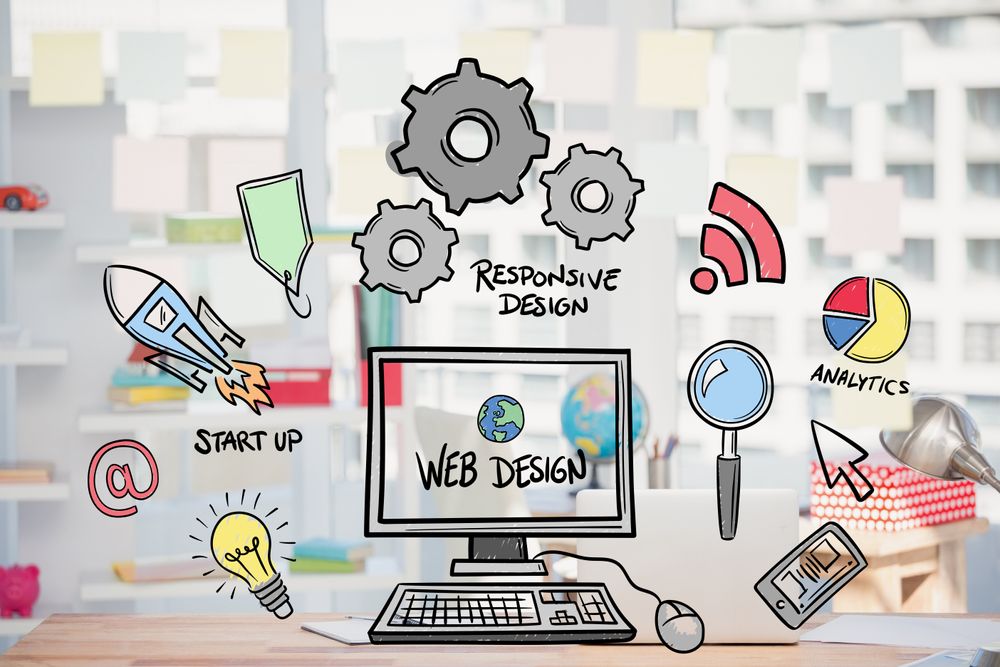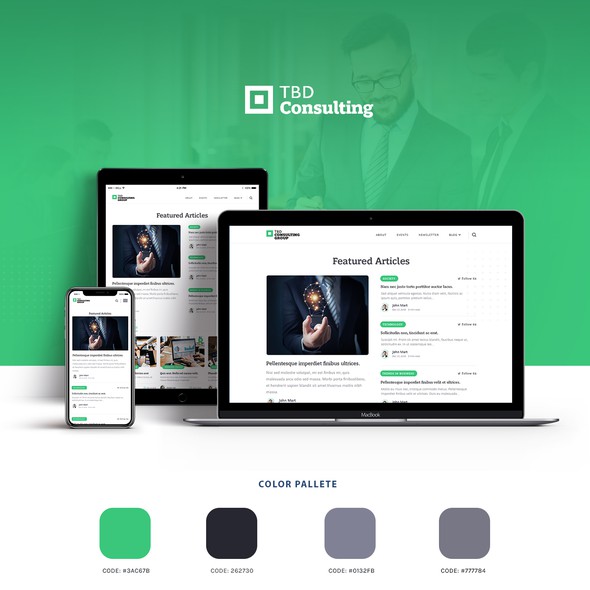Website Design in copyright: Combining Creativity and Functionality for Your Site
Website Design in copyright: Combining Creativity and Functionality for Your Site
Blog Article
Achieve Online Success With User-Friendly Site Layout
In the increasingly competitive digital landscape, the design of an internet site can be a critical variable in establishing an organization's success. Straightforward layout not just enhances the total user experience yet additionally influences crucial metrics such as conversion, retention, and engagement prices.
Significance of Customer Experience
Individual experience (UX) plays a critical duty in the success of a site, as it straight affects customer contentment and interaction. A favorable UX guarantees that site visitors can browse the site effortlessly, gain access to details promptly, and complete preferred actions, such as signing or making an acquisition up for a newsletter, without disappointment.
In an electronic landscape where competitors is intense, a web site that prioritizes UX can substantially improve brand commitment and retention. Individuals are more probable to return to a website that supplies a smooth experience, producing a cycle of repeat check outs and increased client life time worth. Effective UX design can reduce bounce rates, as customers are much less likely to leave a website that fulfills their demands efficiently.
Additionally, search engines significantly consider individual experience aspects when ranking internet sites. Thus, spending in individual experience is necessary for achieving long-term success in the electronic marketplace.
Key Concepts of User-Friendly Layout
A successful easy to use design hinges on a number of vital concepts that enhance functionality and ease of access. First and leading is simplicity; a clutter-free interface makes it possible for individuals to browse easily, minimizing cognitive load. This concept stresses the relevance of clear and succinct material, allowing customers to find details promptly without unnecessary disturbances.
Uniformity is one more vital component. Constant use shades, fonts, and layouts promotes knowledge and constructs count on. Individuals need to really feel comfy as they explore various areas of the internet site, knowing that similar components represent relevant capabilities.
Effective typography also plays an essential role in user-friendly style. Legible typefaces, appropriate sizes, and adequate spacing ensure that web content is quickly legible throughout numerous gadgets. Incorporating intuitive visual power structures aids individuals determine essential information and actions at a look.

Necessary Functions for Navigation
Reliable navigating is important for any kind of easy to use website, as it directly influences the overall customer experience. A well-structured navigation system permits customers to find details quickly and successfully, minimizing disappointment and boosting engagement.
One necessary feature is a intuitive and clear food selection that classifies material realistically - website design copyright. This food selection must be conveniently obtainable from every web page, usually positioned on top or on the side of the website. Furthermore, incorporating breadcrumb navigation aids users recognize their area within the site pecking order and makes it less complicated to backtrack
Search functionality is one more vital element, making it possible for individuals to click here for more info find certain content without looking via multiple pages. This feature should be plainly presented and check my reference responsive to variations in input.
Moreover, a mobile-responsive design guarantees that navigating continues to be smooth throughout tools. As mobile use continues to climb, menus must adapt to various display dimensions without endangering capability.
Lastly, visual cues such as highlighting the energetic page and using hover results can improve individual interaction. By incorporating these vital functions, site designers can develop a navigational experience that is not only straightforward but likewise motivates expedition and retention.
Accessibility Considerations
Ease of access factors to consider are essential to creating an user-friendly internet site that caters to all individuals, despite their handicaps or capabilities (website design copyright). Internet sites have to be designed to make certain that users with visual, auditory, cognitive, or electric motor disabilities can engage with material efficiently. This starts with adherence to the Internet Material Ease Of Access Standards (WCAG), which provide a structure for making electronic material extra obtainable
Trick techniques include making use of detailed alternate message for images, making certain color comparison ratios satisfy availability standards, and providing subtitles for multimedia elements. Additionally, the navigation must be instinctive, allowing individuals to tab through web links and interactive elements quickly. Applying keyboard navigation is important for those not able to use a computer mouse.
Moreover, concise and clear language enhances comprehension for customers with cognitive restrictions. Types need to be straightforward, with tags and directions that are simple to understand. Normal ease of access testing, including customer responses from people with impairments, can aid recognize barriers and improve functionality.
Gauging Design Success

User responses surveys and usability screening are vital in examining the effectiveness of design elements. These techniques permit designers to collect direct input from customers, identifying pain factors and locations for enhancement. Furthermore, tracking heatmaps can disclose where individuals click most regularly, aiding to educate layout changes and material prioritization.
Google Analytics can track user actions, revealing patterns that suggest whether the layout is impeding the customer or facilitating trip. Ultimately, an effective website style not just satisfies business goals however likewise promotes a seamless and enjoyable individual experience, driving interaction and loyalty over time.
Conclusion
Prioritizing individual experience with simpleness, intuitive navigating, and reliable responses devices not only boosts individual engagement and contentment but likewise fosters brand commitment. Integrating vital navigating functions and accessibility considerations even more guarantees that all customers can efficiently connect with the website.
Websites have to be developed to make certain that individuals with aesthetic, acoustic, cognitive, or electric motor disabilities can engage with content effectively.Measuring style success includes reviewing how successfully a website meets its desired goals while offering a favorable user experience. Google Analytics can track user actions, disclosing patterns that indicate whether the layout is helping with or hindering the customer journey. Eventually, an effective website style not just satisfies business objectives however likewise promotes a pleasurable and seamless individual experience, driving interaction and loyalty over time. Focusing on individual experience with simplicity, user-friendly navigating, and efficient comments systems not just boosts individual engagement and satisfaction but also fosters brand name commitment.
Report this page